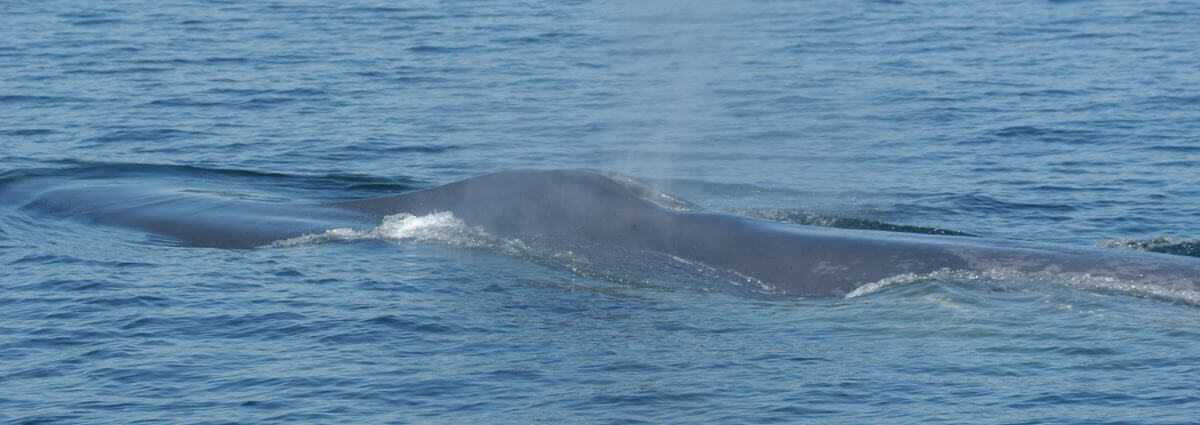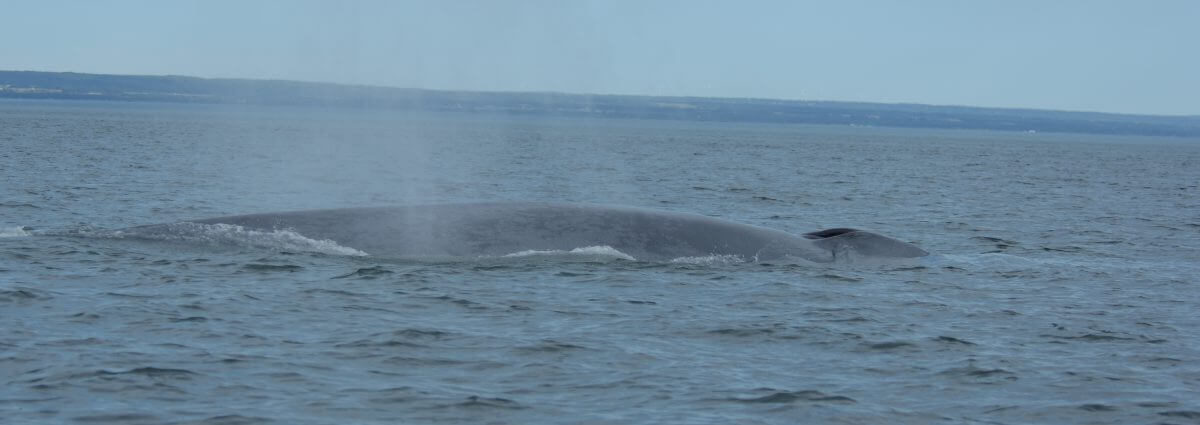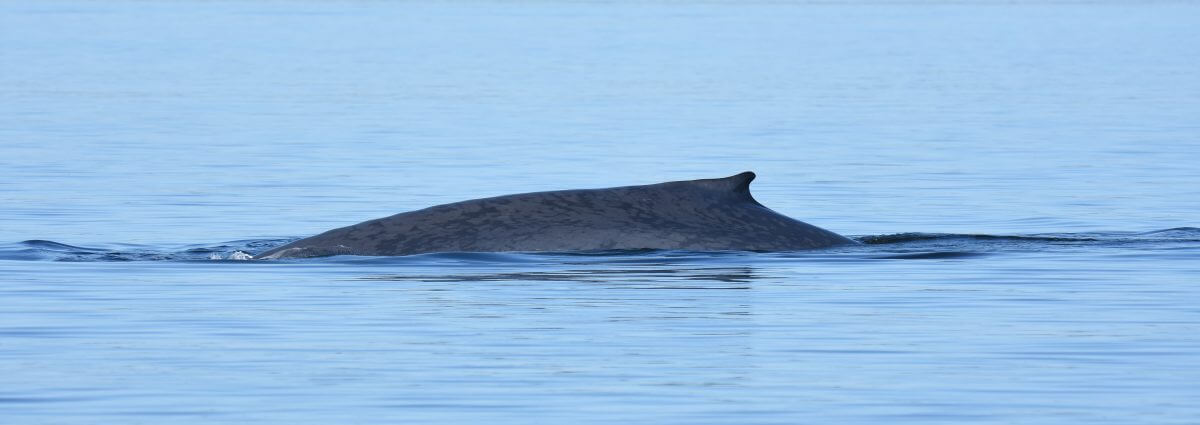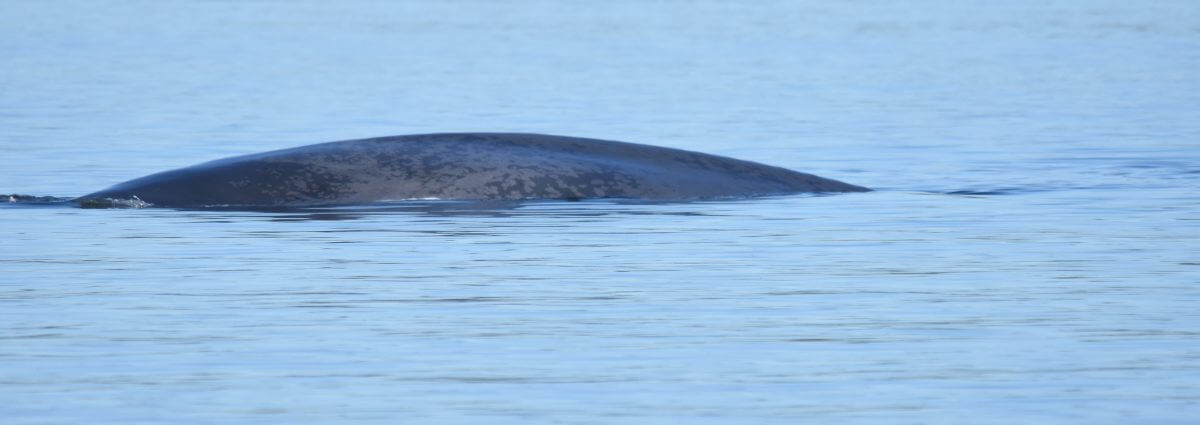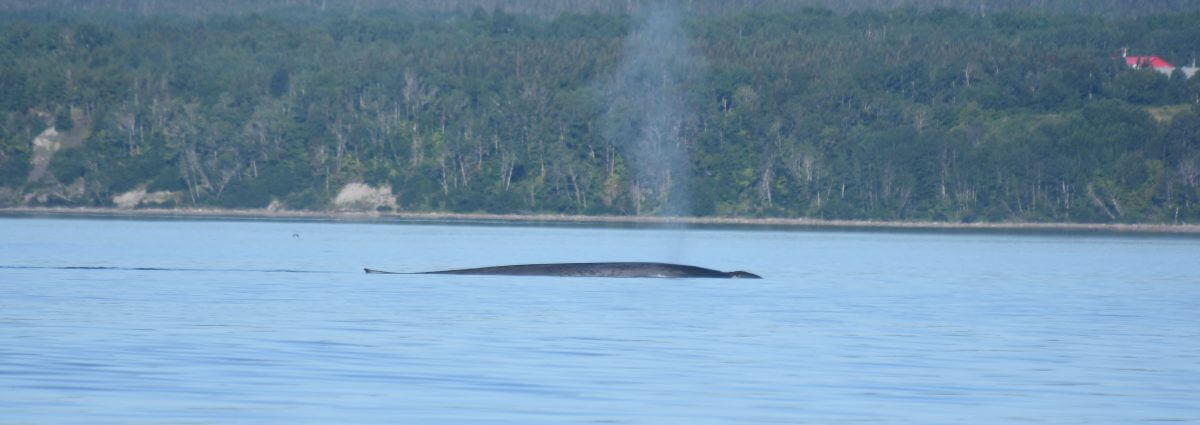B324
Blue Whale


-
ID number
B324
-
Sex
female
-
Year of birth
unknown
-
Known Since
1995
Ses traits distinctifs
Comme c’est le cas pour tous les rorquals bleus, B324 se reconnait à son patron de pigmentation.
Observations history in the Estuary
Years in which the animal was not observed Years in which the animal was observed
Latest news from the publications Portrait de baleines
A text by Audrey Tawel-Thibert
On July 30, our research assistant snapped a photo of the blue whale B324. Ever since she was first encountered in 1995, this female has been seen at times in the Estuary, and other times off the Gaspé Peninsula. In 22 years, B324 has only been seen in the region nine times. Both at the GREMM and at the Mingan Island Cetacean Study (MICS), B324 is rather poorly known. However, this season, captains have noticed an unusual behaviour that distinguishes her from other blue whales: B324 regularly expels air through the orifices of her vent before she emerges at the surface, creating a spray of water. Because of this original habit, captains like to call her “Fontaine” (fountain).
Within the boundaries of the Marine Park, special measures apply to populations and species at risk; a minimum distance of 400 metres must be maintained between boats and endangered cetaceans, including St. Lawrence belugas and blue whales. Regardless of the size of the craft – cruise ships, pleasure boats, kayaks, etc. – all are subject to the Marine Activities in the Saguenay-St. Lawrence Marine Park Regulations, which are enforced at sea through monitoring activities conducted by park wardens. Our two research assistants participating in the large rorqual photo-census program work in compliance with established rules: they themselves board cruise ships on a daily basis.
How do our colleagues manage to carry out their tasks despite the limitations of marine mammal observation activities? In addition to being comfortable with photography, they are equipped with a powerful camera equipped with a telephoto lens with a wide range of focal lengths (80-400 mm) – to put it simply, a very high-performance zoom. Thus, even from a distance of more than 400 metres away, our research assistant was able to produce the photograph of B324 shown above, which is sufficiently clear and zoomed in to the animal to examine its colour pattern. It should be added that these photos that we publish in Whale Portraits are cropped using software, eliminating the superfluous water around the animals and enlarging their bodies at the same time.
Did you know that you, too, can contribute to efforts to photo-ID the whales of the St. Lawrence? If you have any clear and well focused snapshots, and the physical details of your subject appear distinctly, we invite you to upload them at the following address: https://1000jours.canald.com/en/virtualwhaleguide/participate. This initiative is part of the 1000-day conservation plan for the planet, a major oceanographic expedition that lasted three years: biologist Jean Lemire and his crew sailed the oceans of the world aboard the Sedna IV to discover the beauty and the fragility of its ecosystems.
In addition to the files you can submit on the site, be reminded that the GPS coordinates at the time of the photo, the place of observation and a description of the encounter are also very useful for research. The information will be forwarded to GREMM and MICS. Thank you, and happy whale-watching!


